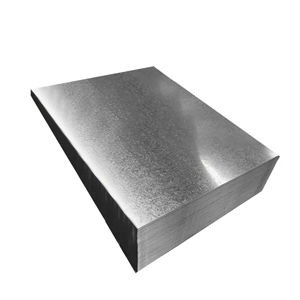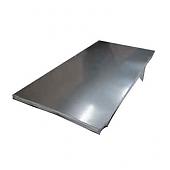Advantages and disadvantages of stainless steel


Introduction to the disadvantages and advantages of stainless steel
1. Advantages of stainless steel
Corrosion resistance
Stainless steel has good corrosion resistance and can resist the erosion of most chemical media, including acids, alkalis, salts, etc. This makes stainless steel have excellent stability in humid and corrosive environments and prolongs its service life.
For example, austenitic stainless steel has the best corrosion resistance and the widest range of applications.
High strength
Stainless steel has high strength, which makes it widely used in structural engineering. By controlling the content of alloying elements and heat treatment, the strength of stainless steel can be adjusted to meet the needs of different applications.
High temperature resistance
Stainless steel also has good high temperature resistance. Some stainless steel alloys can maintain structural stability and strength in high temperature environments. For example, the maximum use temperature of 310S stainless steel reaches 1300 degrees, and the continuous use temperature is 1150 degrees.
Aesthetics
Stainless steel has a metallic luster and beautiful appearance, which is suitable for decoration and other fields. Through polishing, sandblasting, coloring and other treatment methods, different design requirements can be met.
Environmental protection
Stainless steel is a recyclable material with good environmental protection. Waste stainless steel can be recycled and reused to reduce resource waste and environmental pollution, which is in line with the concept of sustainable development.
Hygiene
In the field of hygiene, stainless steel has excellent hygiene. Its surface is smooth, not easy to adhere to bacteria and dirt, easy to clean and disinfect, and meets hygiene standards.
Easy to maintain
The surface of stainless steel is smooth, not easy to absorb dust and dirt, easy to clean and maintain. At the same time, the chromium layer on it can prevent oxidation and resist scratches.
Wear resistance
Stainless steel has high wear resistance and can maintain the integrity and durability of its surface under friction and wear conditions.
2. Disadvantages of stainless steel
High price
The production cost of stainless steel is high, so it is expensive. Compared with other ordinary steels, its market price is relatively high.
Difficult to process
Stainless steel has high hardness and is difficult to process, requiring special processing equipment and processes. This also increases the processing cost.
Heavy weight
Stainless steel has a higher density and heavier weight than some other materials such as plastics and aluminum alloys. This may bring certain inconveniences to applications in some specific occasions.
Poor thermal conductivity
The thermal conductivity of stainless steel is not as good as that of materials such as aluminum alloys and copper, which may become a limiting factor in some occasions that require good thermal conductivity.
In summary, stainless steel is widely used in many fields due to its advantages of corrosion resistance, high strength, high temperature resistance, aesthetics, environmental protection, hygiene, easy maintenance and wear resistance. However, its disadvantages such as high price, difficult processing, heavy weight and poor thermal conductivity also need to be considered when using it.
1. Advantages of stainless steel
Corrosion resistance
Stainless steel has good corrosion resistance and can resist the erosion of most chemical media, including acids, alkalis, salts, etc. This makes stainless steel have excellent stability in humid and corrosive environments and prolongs its service life.
For example, austenitic stainless steel has the best corrosion resistance and the widest range of applications.
High strength
Stainless steel has high strength, which makes it widely used in structural engineering. By controlling the content of alloying elements and heat treatment, the strength of stainless steel can be adjusted to meet the needs of different applications.
High temperature resistance
Stainless steel also has good high temperature resistance. Some stainless steel alloys can maintain structural stability and strength in high temperature environments. For example, the maximum use temperature of 310S stainless steel reaches 1300 degrees, and the continuous use temperature is 1150 degrees.
Aesthetics
Stainless steel has a metallic luster and beautiful appearance, which is suitable for decoration and other fields. Through polishing, sandblasting, coloring and other treatment methods, different design requirements can be met.
Environmental protection
Stainless steel is a recyclable material with good environmental protection. Waste stainless steel can be recycled and reused to reduce resource waste and environmental pollution, which is in line with the concept of sustainable development.
Hygiene
In the field of hygiene, stainless steel has excellent hygiene. Its surface is smooth, not easy to adhere to bacteria and dirt, easy to clean and disinfect, and meets hygiene standards.
Easy to maintain
The surface of stainless steel is smooth, not easy to absorb dust and dirt, easy to clean and maintain. At the same time, the chromium layer on it can prevent oxidation and resist scratches.
Wear resistance
Stainless steel has high wear resistance and can maintain the integrity and durability of its surface under friction and wear conditions.
2. Disadvantages of stainless steel
High price
The production cost of stainless steel is high, so it is expensive. Compared with other ordinary steels, its market price is relatively high.
Difficult to process
Stainless steel has high hardness and is difficult to process, requiring special processing equipment and processes. This also increases the processing cost.
Heavy weight
Stainless steel has a higher density and heavier weight than some other materials such as plastics and aluminum alloys. This may bring certain inconveniences to applications in some specific occasions.
Poor thermal conductivity
The thermal conductivity of stainless steel is not as good as that of materials such as aluminum alloys and copper, which may become a limiting factor in some occasions that require good thermal conductivity.
In summary, stainless steel is widely used in many fields due to its advantages of corrosion resistance, high strength, high temperature resistance, aesthetics, environmental protection, hygiene, easy maintenance and wear resistance. However, its disadvantages such as high price, difficult processing, heavy weight and poor thermal conductivity also need to be considered when using it.
Related Products
Contact Us


